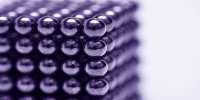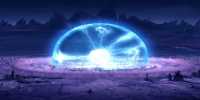Physicists, however, consider this to be a possible result of an achievement that seems ultimately impossible on its own; Photons keep each other away. A sliver of crystal light seems like something like a romantic poem or especially a fantasy novel.
Photons, the units from which light is made, do not attract or resist each other. These, for example, can accelerate atoms but prevent the possibility of creating lightships, for example, without doing any such work with others of their own kind. At least that’s the norm, but physicists learned long ago that calling anything in the world of quantum behavior impossible is a risky move. An exception was found in 2013 when photons traveling through the ultrasound gas created an attraction to each other as if they were sitting together for heat.
As described in a newspaper in Nature Physics, The team members responsible for the discovery wondered if the photons could retreat if they could attract. Seven years later their efforts have been rewarded. They have even shown both repulsion and attraction in photon triads.
The photons in this environment enter what is known as the Rydberg state, which resembles an atom with electrons excited enough to reach the level of ionization. The researchers then linked the two photons to separate atomic states of the same atom. Sticky or repulsive photos are not something you will encounter in your daily life. To make them, MIT Professor Vladan Vuletić and co-authors had to cool the rubidium gas 50 million degrees above absolute zero and use electromagnetic fields to make the gas transparent.
After burning the photons in the rubidium, the team was able to show the possibility of leaving two-photon gases at the same time so that they could repel each other. Similarly, by harmonizing atoms with different fields, researchers can show more co-position than the opportunity for photons, indicating gravity. After adding the conditions that separated the photons, repulsion occurs in the third photon from both.
The work shows the possibility of fine photon control so that they are attracted to each other from a distance but resist as they get closer, maintaining a stable relationship that can be created into something like a crystal structure.
Photonic crystals may have applications in quantum communication but we are very good with the concept of the light bar. The paper notes, “This has opened up opportunities for the study of the outer layers of matter, including self-organization and photonic quantum materials, in open quantum systems.”















